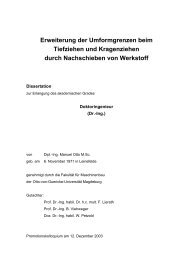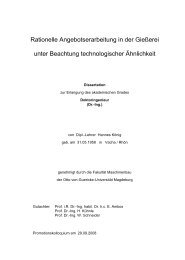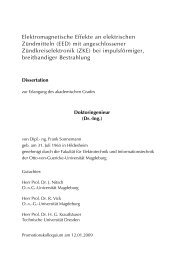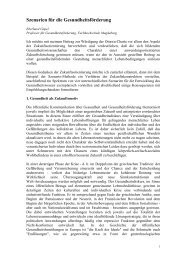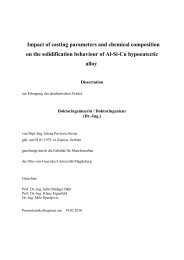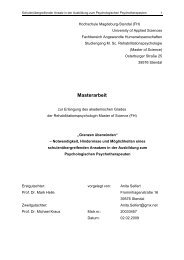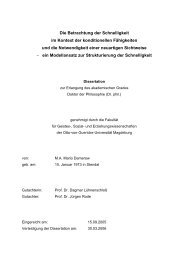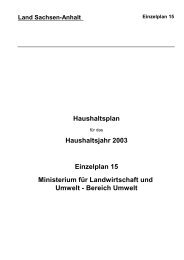Chapter 1
Chapter 1
Chapter 1
You also want an ePaper? Increase the reach of your titles
YUMPU automatically turns print PDFs into web optimized ePapers that Google loves.
largest share of total employment (24 percent). Other sub- increased decentralization in the collective bargaining<br />
sectors that created jobs faster than the average were process should help keep wages and prices in line with intertourism<br />
and machinery, with particularly high job growth national trends (see Rama 1995).<br />
rates, but they accounted for a small share of total employ- Because of its size and importance in the economy, the<br />
ment. Employment in government administration grew public sector's wage and employment policies play a critical<br />
faster than the average at 3 percent a year, and its share in role in Tunisia's labor market and merit closer review. An<br />
total employment remained at about 18 percent. INS Survey shows that wages for permanent workers in PEs<br />
Average wages declined by 0.1 percent per year in real are higher (and the disparity has grown since 1985) than in<br />
terms over the past decade, with the sharpest declines in either the domestic or offshore private enterprises, particu-<br />
1986-87. Since 1988 real average wages have started to climb larly for unskilled and skilled workers (table 3.7). Part of the<br />
back, and by 1993, reached the same level in real terms as in reason for lower wages in the offshore sector may be<br />
1983. Minimum wages eroded considerably since the early because it employs a high share of women at low salaries.<br />
1980s and are now relatively low in Tunisia: the minimum There may also be some data and sampling problems with<br />
wage for manufacturing (SMIG) is around 6 TD per day and the INS survey.<br />
for agriculture (SMAG) is about 4.6 TD. Recent analysis also Legislation concerning layoffs for economic reasons<br />
indicates that the minimum wage does not represent a major may be the most important government-induced distortion<br />
labor market distortion, having only a modest and temporary in the Tunisian labor market. The Government has strong<br />
effect on average wages (Azam 1995). administrative capabilities to enforce labor regulations in<br />
Every three years, Tunisia uses sectoral collective bar- Tunisia. Difficulties in laying off stem from the need to<br />
gaining agreements (convention collective) to determine submit a request to the Inspection du Travail which has<br />
wages and benefits for some forty-six different sectors. The one month to review the request. If no solution is found,<br />
most recent three year (1993-96) wage agreement increases the employer needs to obtain the consent of a tripartite<br />
wages by 6 percent a year and is binding for all firms with body (Commission du contr6le des licenciements) before<br />
four workers or more, regardless of whether these workers any retrenchment takes place. In practice, this turns out to<br />
are permanent or temporary and regardless of whether they be difficult. In 1994 for example, 505 firms wanted to<br />
are unionized or not. Experience in other countries shows retrench a total of 60,390 workers (which corresponds to<br />
that wage moderation is generally best achieved through an average job destruction of 3-4 percent compared to<br />
either decentralized (firm-level) or centralized (nationwide) 10-11 percent in Germany or the United States). Out of<br />
wage negotiations, rather than the sectoral approach used the total, 346 respected the legal procedures, 151<br />
in Tunisia. The Government, the unions, and the employer retrenched unilaterally (and are subject to sanctions), and<br />
associations recognize the importance of maintaining inter- 8 firms reached an agreement with their workers. Of the<br />
national competitiveness, in part by ensuring that wage 346 requests, the tripartite commission was able to reach<br />
agreements do not put undue pressure on inflation and do an agreement for only 182. In the end, less than 26 percent<br />
not raise unit labor costs significantly above Tunisia's main of the workers included in the requests for retrenchment<br />
competitors. Continued liberalization of product markets were actually laid off (Rama 1995). The Government is<br />
(through trade and price liberalization) along with some currently reviewing labor legislation and is preparing a<br />
strategic study for the Ninth Plan on labor legislation, the<br />
TAKBE 3.7 relationship between productivity and wages, and labor<br />
Wage dlferentlals costs. The preliminary analysis prepared for this report<br />
(permanent workers, I 99) raises several issues for further study: (1) enterprise flexi-<br />
Higher<br />
evel<br />
Unsidlled<br />
worker<br />
Skiled<br />
workor<br />
bility to adjust the size of the labor force to a changing<br />
commercial environment, (2) the impact of public sector<br />
Publksects 1.16 1.60 1.73 wage and employment policies on the private sector, (3)<br />
Offshoe private 1.00 0197 0.78 the possibility of introducing greater flexibility into the sec-<br />
Average wage 1.00 1.00 1.00 toral collective bargaining process, (4) improving the mca-<br />
Source: Haicm 1995. surement of unemployment through annual labor surveys<br />
36 TuNisis's GLOBAL INTEGRATON AND SUSTAINABLE DEvOPMENT. SIRATEGIC CHOICES FOR THE 21ST CENrs




